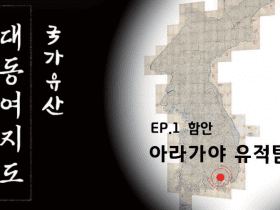A new quadrupedal trackway was found in the Lower Cretaceous Daegu Formation (Albian) in the vicinity of Ulsan Metropolitan City, South Korea, in 2018. A total of nine manus-pes imprints show a strong heteropodous quadrupedal trackway (length ratio is 1:3.36). Both manus and pes tracks are pentadactyl with claw marks. The manus prints rotate distinctly outward while the pes prints are nearly parallel to the direction of travel. The functional axis in manus and pes imprints suggests that the trackmaker moved along the medial side during the stroke progressions (entaxonic), indicating weight support on the inner side of the limbs. There is an indication of webbing between the pedal digits. These new tracks are assigned to Novapes ulsanensis, n. ichnogen., n. ichnosp., which are well-matched not only with foot skeletons and body size of Monjurosuchus but also the fossil record of choristoderes in East Asia, thereby N. ulsanensis could be made by a monjurosuchid-like choristoderan and represent the frst possible choristoderan trackway from Asia. N. ulsanensis also suggests that semi-aquatic choristoderans were capable of walking semi-erect when moving on the ground with a similar locomotion pattern to that of crocodilians on land.
Download
https://www.nature.com/articles/s41598-020-71384-1








Leave a Reply